Review: The 135th AES Convention — Which Direction Did This Year’s Show Go?
Moving forward.
For everyone involved in the business of recorded music and sound, the onset of the 135th AES convention in New York City had question marks aplenty. Would this tradeshow – which serves as the spiritual hub for everyone involved in professional audio – represent one step ahead or one step back?
A Challenging Precedent
Following the double dose of disappointment that many attendees experienced over the last two years, it was reasonable to brace for another negative in 2013.
After all, the 133rd that took place in San Francisco last year felt marred in many a way: by seemingly sparse attendance, a solid but uninspiring technical program, and some conspicuously absent exhibitors — all while Hurricane Sandy ravaged the East Coast in historic fashion.
In 2011, the 131st AES convention similarly took the wind out of our collective sails. There was major construction going on at NYC’s Jacob Javits center, which relegated the gradually shrinking show to a gloomy corner of the complex, a good half-mile away from the technical program and other special events. The result was a sinking feeling for everybody involved before they even set foot on the floor.
In Wall Street talk, the analysis would be that the AES show was “trending downward.”
In the Moment
But lo and behold for everyone who made it to Manhattan’s Far West side last week, and sensed an energizing uplift in the air before they even printed their badge: AES felt good again.
Back where it belonged in the Javits’ main hall, sunlight spilled over visitors as they entered the center’s main atrium — a healthy harbinger of the refreshed attitude that pervaded the show.
Once inside, that intangible buzz of energy that everyone – exhibitors and visitors alike – long to feel pulsed like a Moog oscillator, and never let up. On the exhibition floor, the return of Avid felt like a fundamental cornerstone that had been put back in place. Meanwhile, all the microphones, monitors, compressors, limiters, and 500 modules that an engineer could reasonably eat filled the aisles.
Yes, as before, virtually no other DAW’s besides Pro Tools were representing, and the plugin developers whose code rules today’s pro audio workflow remained disproportionately few and far between. Still, for those on the lookout there were enough GUI’s to go around.
Down below the show floor, the work of the planning committee, overseen by AES President Frank Wells, Executive Director Bob Moses, and a dedicated team of organizers made the Technical Program pay off in a big way. Attendees faced some serious choices when trying to sift through the appealing array of special events, workshops, special tracks, master classes, and other activities which accompanied the paper sessions and engineering briefs that are always there for the strictly hard-core. (Editor’s Note: On October 25th, the AES announced a five-year high in in registrants for the 135th — 18,453 — a 16% increase over the last NYC convention.)
Emerging Energy
Beyond the meticulously planned aspects of the convention, of course, is where you get the real idea of where the industry is going. It’s the thousands of spontaneous conversations that break out, whether it’s at the Javits by day or the cross-borough studio parties that liven up each night, where you learn the true tenor of the industry.
Time and again, the recurring motif was this: Most audio professionals are busy as hell, and getting busier. Mixers, engineers, and producers who previously felt embattled by massive change in the music industry are now taking matters into their own hands by finding new ways to make profitable partnerships.
Clever new concoctions of business models involving composers, licensing, artists, audio post offerings, and myriad other multimedia permutations revealed themselves. These weren’t just dreams, but real revenue streams – many people’s innovative plans were well in motion, and already bearing fruit.
And let’s face it – this is NYC. We want to make sure our global guests know there’s more to our town than the Javits. It seems like every convention here we up the nightlife ante, and just 12 months removed from a paralyzing storm the Big Apple displayed its nonstop drive once again.
There’s heavy audio activity all across the five boroughs, but as nightly events at Mission Sound, The Brewery, Studio G (see the party pics below), and many more confirmed, the rapid expansion of Brooklyn is on – its mannered rivalry with Manhattan has firmly established NYC as the world’s Twin Cities of recording.
Don’t Look Back
There are those who note that the annual AES isn’t what it once was. And if you compare it to the year 1996, for example — when I first attended the show and was overwhelmed by the seemingly nonstop aisles of gear taking up multiple exhibition halls at the Javits — they’re right.
But hardly anyone had an email address or Website then either, tracking to tape was still the norm, and the first #1 single to be recorded, edited, and mixed completely in Pro Tools (“Livin’ la Vida Loca” by Ricky Martin) was still three years off.
In the meantime, don’t bother talking about the big ole’ days of the show to the legions of young faces that were all over the 135th. This year’s convention attracted a lot of new blood, and most of them don’t know or care what the business used to be.
They’re moving forward. And after four dynamic days in New York City, it looks like all of audio is doing the same.
– David Weiss
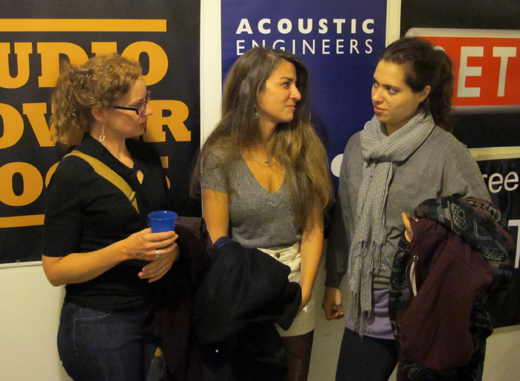
A mastering meetup: Jessica Thompson of The Magic Shop, Heba Kadry of Timeless Mastering, & The Lodge’s Sarah Register
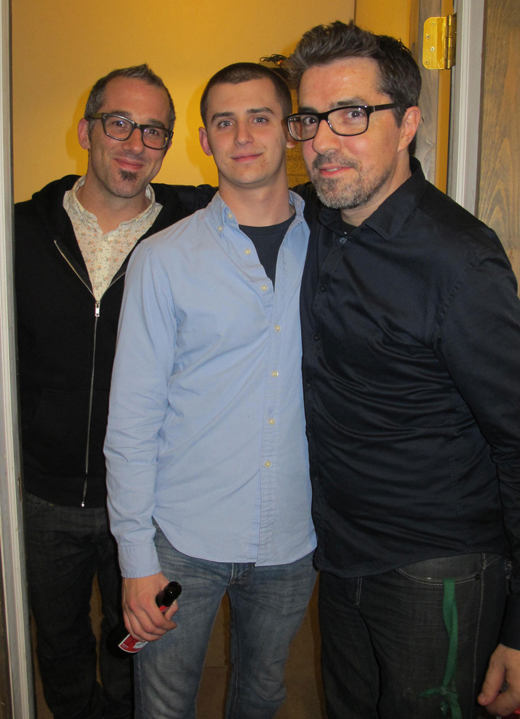
Studio G co-founder Joel Hamilton (l) and Audio Power Tools’ Dan Physics (r) flank Jon Ruest, Eastern Sales Manager for Apogee.
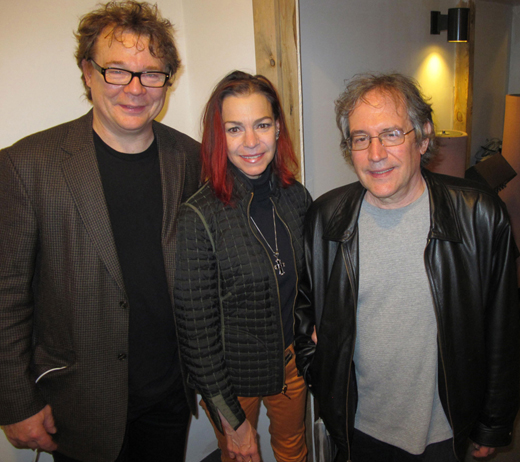
(l-r) Resident genius John Klett of Nonlinearaudio, Gail Terelle, and sound designer/mangler John Terelle
Please note: When you buy products through links on this page, we may earn an affiliate commission.







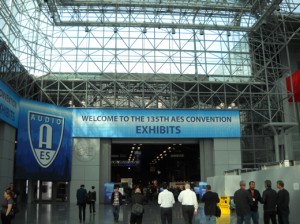
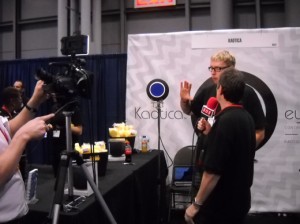
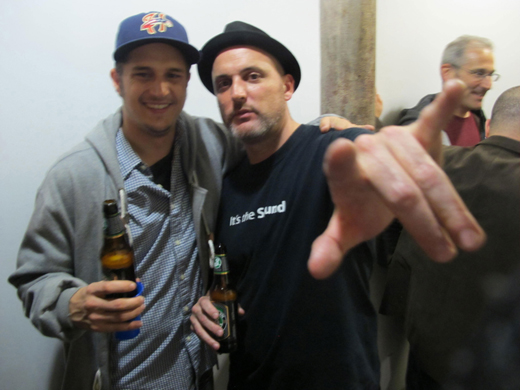
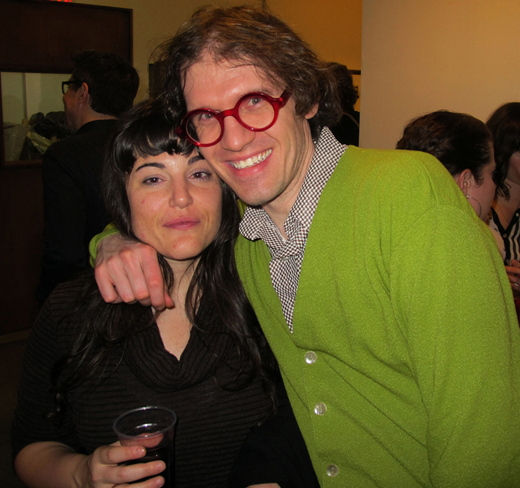
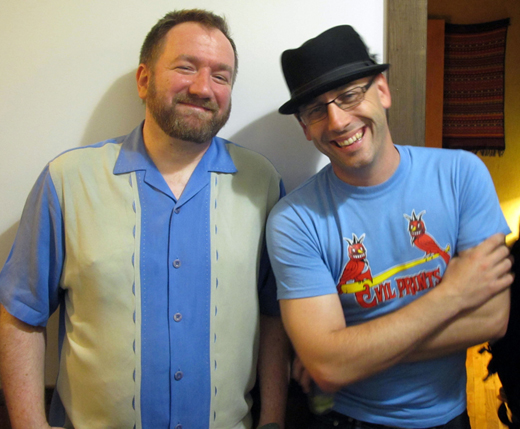
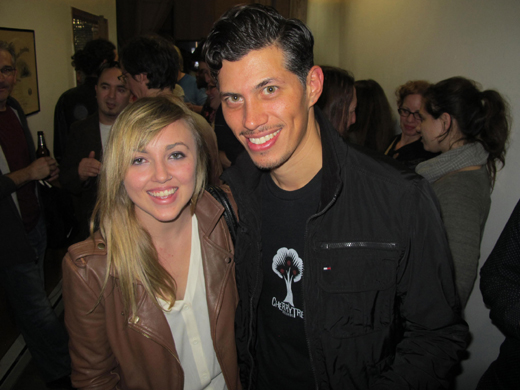
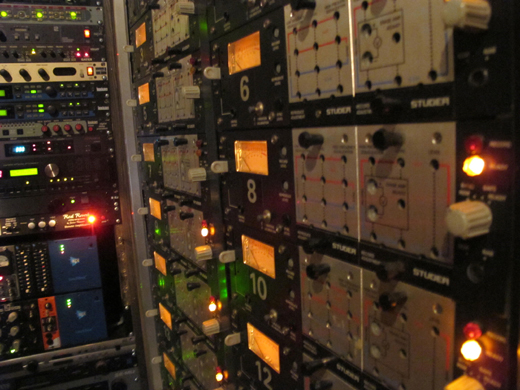
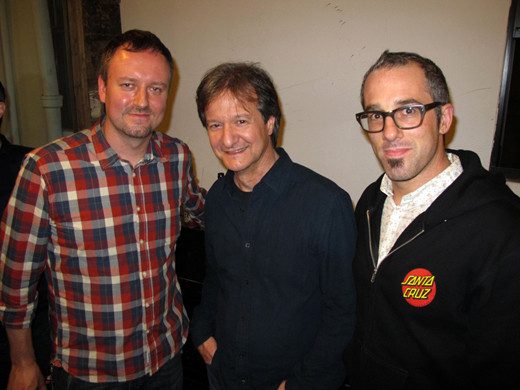
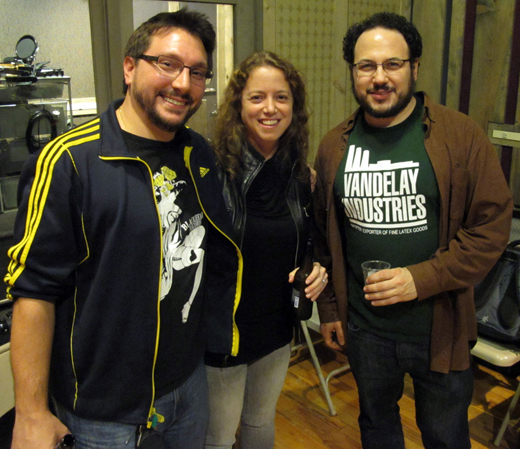
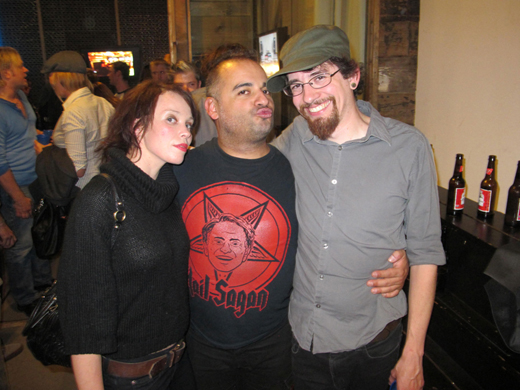
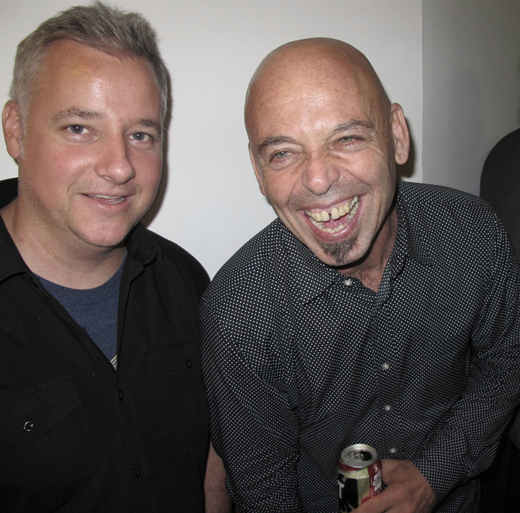
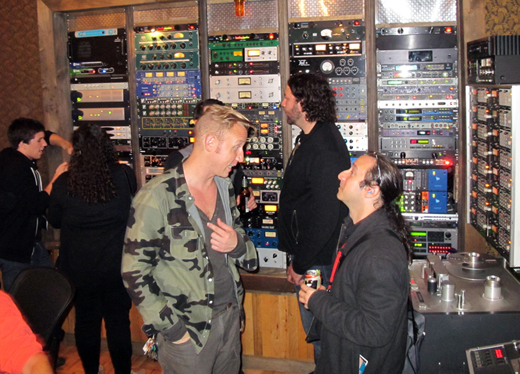
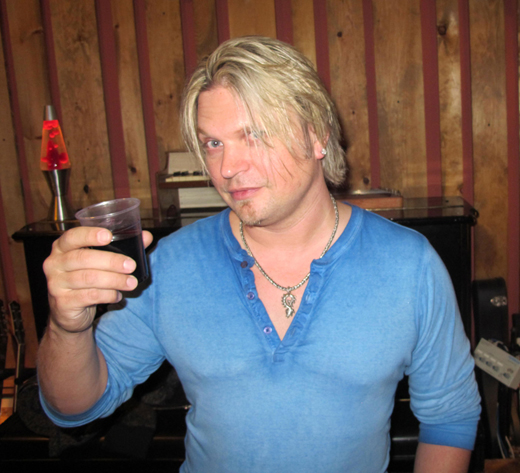
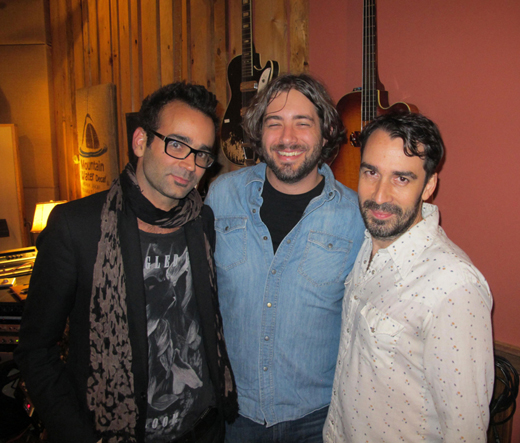
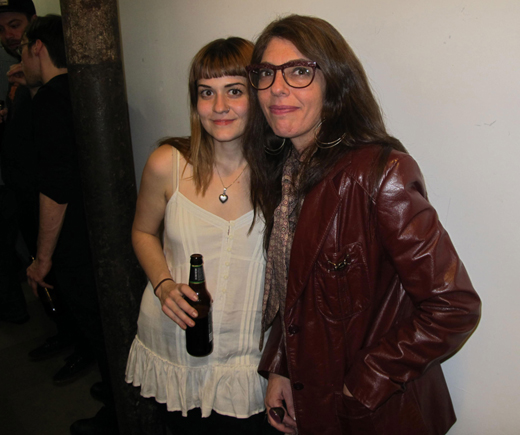
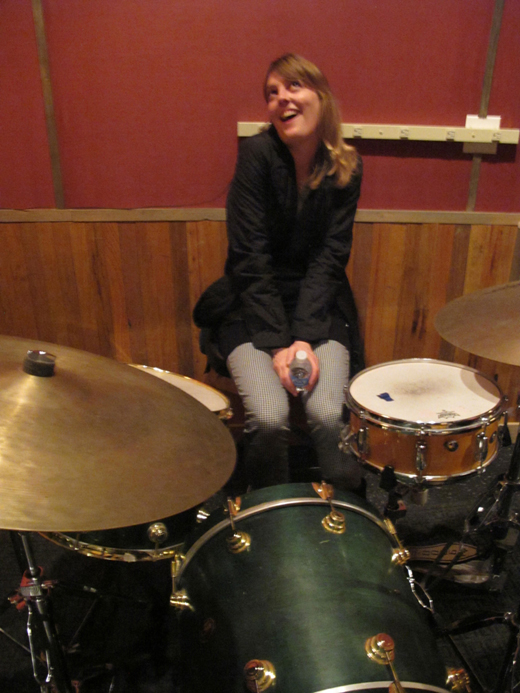
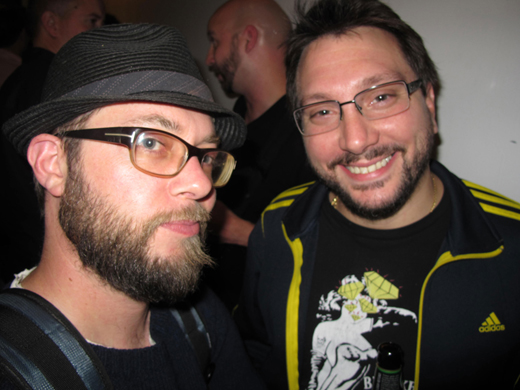
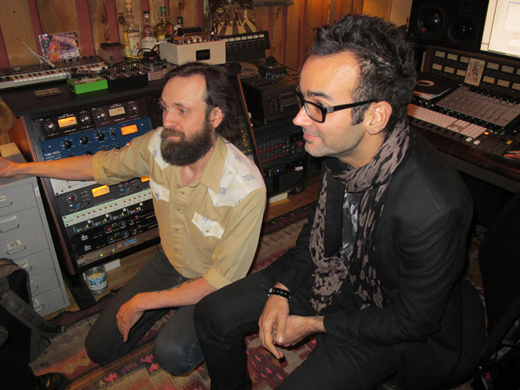
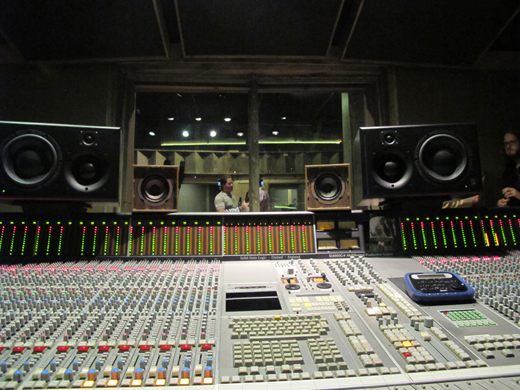
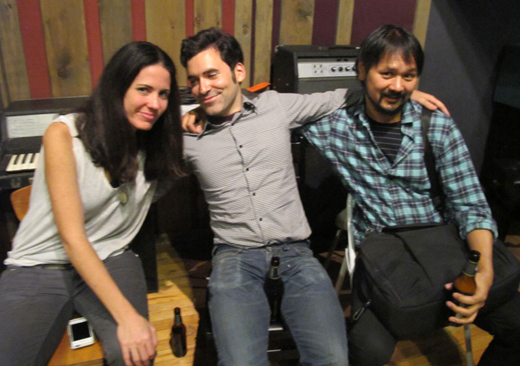
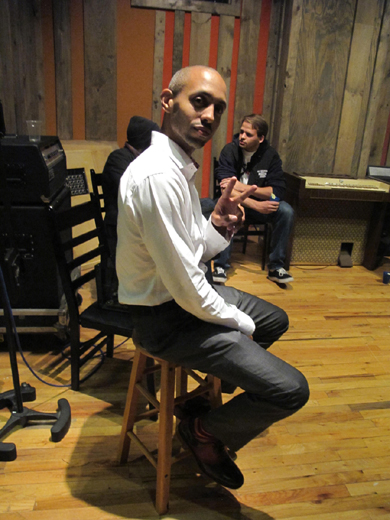
Zal Schreiber
October 25, 2013 at 7:28 am (11 years ago)I missed the last 2 AES conventions in NYC.
I was there for the one before those, and, to my mind, that one was much more happening than the one just past.
Maybe my previous absences give me a different perspective than the ones that attend every year…or at least the ones here in NYC. Of course, I did not experience the gloom of the Javits Center and the secondary or worse accommodations due to the construction last time….or the lacking of Avid last time, either.
That said, perhaps almost anything would have seemed better. But, I wasn’t affected by that.
What I thought I perceived was…as far as the equipment booths alone….that there didn’t seem to be as much happening on the floor…a lack of excitement…it much more business/corporate like in general…and, a few times back, before Tascam was owned by them, Gibson made a major showing of guitars, all hooked up and ready to roar…a nice sight (and sounds!) no matter what.
This year, it seemed like Avid reigned with their large foray of gear (and square foot real-estate allotment)…but is it a sign that many of the small-frye of the industry are facing extinction or takeover? It’s the small folks who have made many major contributions but the larger corporations are soaking them up. Yes, this year there wer quite a few “small frye”…but how is it looking in the future trend of things?
Thinking back, I’m a bit sad that the closest to analog there were the pre-amps (many with tubes), or a booth or two of anaolog recording tape. So many tape machine companies have gone under, or have moved with the times and/or have chosen to dance with them.
It seemed to me that man(or woman)power was mostly at a minimum… with lotsa connective gear (CAT5/6, USB/ BlueTooth, WiFi , iOS gear) garnishing much of the attention. This makes me think that many of these folks may not be audio professionals, but tech-savvy IS individuals who are reaping the all around technology, which, by the way, works well for them in an audio showcase. Control seems to be a big draw to the latest audio “pros”…and, everyone else for that matter.
Another difference in perspective is due to my attendance of the NYC AES Conventions since the mid 80s’s, when digital and CDs became the major interest in the industry, during those heady days of the first digital consoles (and sometimes, their artifacts!). Who knows how many of the attendees of this years’ AES have been around since then….When LPs were on the wane, but analog console manufacturing was still hearty and mainstream. I grew up on meat and potatoes audio equipment, not like some of the glitzier gear of today. And East Asian outsourcing? Back then, well, maybe Japan, but that was an accepted norm by then, considering the Japanese giants, like Sony, Pioneer, Toshiba,etc.
Nowadays, what the mass production is this area of the world means is that major US made gear corporations are no more, or are at minimal capacity and, of course, prices are cheaper and that Pro and semi-Pro gear is now to be found in the hands of other than professionals…and the line between them is (even more) blurred…and quality has been in many ways affected and compromised. And now, being a technician is sometimes more important than (just) being an audio engineer. In the late 80’s , in the presence of famed engineer Bruce Botnick , producer (the Doors, Love, etc.) great Paul Rothschild (RIP) said to me…”In the 60’s, we listened to the quality of the music. Nowadays, we listen to the quality of the sound.”. I think nowadays, we care about the super specs of the equipment…no matter where it comes from. Jimi Hendrix played phenomenally…but, in notes per second, he was a slow-hand…like Eric… and would not compare to those speed demon guitar aficionados of the last few years. But, how much emotion can you pick out of that 32nd note slur (without looking at the contortion of the guitarist’s face)? Contrasted to the gear out their today…how much emotion can you feel or does emote from the newest gear we’re/you’re using? Names of the past…like Ampex, Skully, MCI…ok, these are analog tape…but, they are more than that., American Icons…and they are gone. Guitar amp companies….Ampeg, Vox, HiWatt…where are they made now? And Gibson, proud new heir to Tascam, only 2 guitars at this year’s AES???
OK..I’m off the trail, here.
Yes, lots of great gear…and we’re used to them being from other places. With engineers being many times something different than what they were some year’s past…and the manufacturing and retail industry sucking it up royally due to the profits generated…from overseas…but at what cost? Keep it up Coleman Audio and similar companies sticking to their roots…and the traditions of good ‘ole US sound recording.